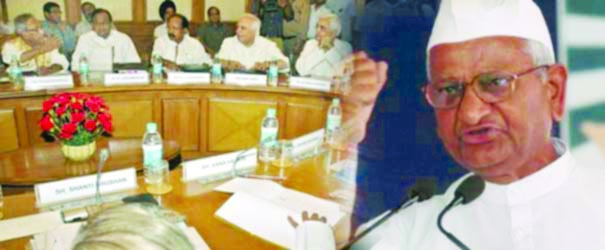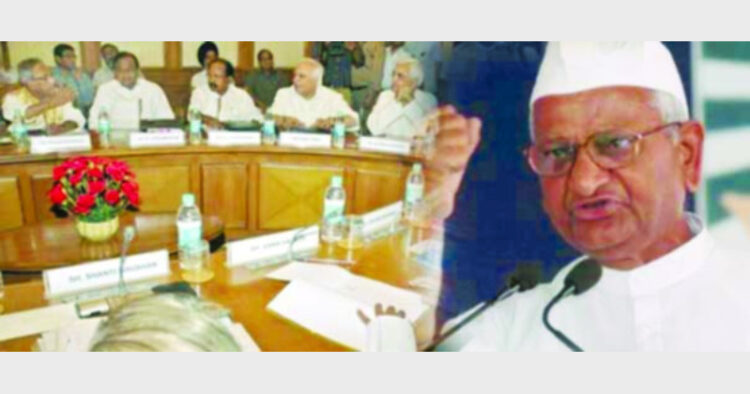
Consensus is the essence of democracy
The Standing Committees have failed to trash out differences?
By Nilanjan Mukhopadhyay?
The Constituent Assembly of India met for the first time on December 9, 1946. It held deliberations for slightly more than three years holding eleven sessions of which first six were spent in discussing and passing the Objectives Resolution, considering Reports of Committees on Fundamental Rights, on Union Constitution, on Union Powers, on Provincial Constitution, on Minorities and on Scheduled Areas and Scheduled Tribes. The subsequent sessions were devoted to the consideration of the Draft Constitution.
These eleven sessions collectively accounted for 165 days of which 114 days were for discussing and considering the Draft Constitution. Finally, on November 26, 1949 the Constitution was adopted and on January 26, 1950 India became a Republic when the result of the Constituent Assembly’s labour came into force.
The time the Indian Constituent Assembly spent in drafting the world’s longest written Constitution was somewhere in between similar exercises in other countries. The American Convention completed its work within four months between May 25, 1787 and September 17, 1787. The Constitutional Convention of Canada took two years and five months between October 1864 and March 1867. In contrast the Australian Constitutional Convention took nine years from March 1891 to July 1900. This matter came up in the final moments before the passage of the Constitution on November 25, 1949 and critics contended that excessive time had been spent without really achieving anything significant – that there were still yawning gaps in the Constitution. Dr BR Ambedkar in his reply argued that “the Constitutions of America, Canada, South Africa and Australia are much smaller than ours,” so any comparison on the amount of time consumed would be unfair.
But the most significant aspect of the manner in which the Indian Constitution was drafted was the procedure that was adopted. The Draft Constitution that was sent to the Constituent Assembly by BN Rau, the often less-championed Constitutional Adviser of the Assembly consisted of 243 Articles and 13 Schedules. The document that the Drafting Committee sent to the Constituent Assembly had increased in size and contained 315 Articles and 8 Schedules. At the end of the consideration stage, the number of Articles increased to 386. Finally, the Draft Constitution that was brought to the House for adoption contained 395 Articles and 8 Schedules. A total of approximately 7,635 amendments were tabled of which 2,473 were actually moved. In contrast 187 amendments pales into insignificance. But more on that later. During the proceedings of the Constituent Assembly the attempt was that majority tried persuading the minority which in turn attempted to make the other see its point of view. At no point did the thought come to the majority that they need not engage the minority in a dialogue because of having the numbers with it.
There were major differences among members of the Constituent Assembly. But the debate never turned acrimonious even though parliamentary name-calling was witnessed quite often. Dr Ambedkar was particularly stung by the criticism of Naziruddin Ahmad of West Bengal. In his reply on November 25, 1946 to the criticism about the lack of performance of the Drafting Committee (called Drifting Committee by Ahmad) that was chaired by Dr Ambedkar, he said: “Everybody has a right to have his opinion about the work done by the Drafting Committee and Mr. Naziruddin is welcome to have his own. Mr. Naziruddin Ahmed thinks he is a man of greater talents than any member of the Drafting Committee. The Drafting Committee would have welcomed him in their midst if the Assembly had thought him worthy of being appointed to it. If he had no place in the making of the Constitution it is certainly not the fault of the Drafting Committee.”
The point behind quoting this exercise is simple: to underline the level of personal acrimony among members on certain issues. Yet it needs to be kept in mind that the debate stayed within the boundaries of parliamentary decorum and at no point did Parliament witness sights like members tearing a Bill or throwing pages of amendments in the air if their viewpoint was not accepted.
To quote from another example from the same day—Tajamul Hasan, a member from Bihar—was speaking and he exceeded the time given by the President of the Constituent Assembly, Dr Rajendra Prasad. The bell had been rung once to remind Hasan that he had exceeded the time limit.
Hasan: (continued from before)…In spite of some defects it is a unique and a remarkable Constitution and we should be proud of it. I shall now deal with a few defects. I have got only two.
(At this stage the President’s bell rang.)
Hasan: I will speak of at least one, Sir,
(The Bell was rung again).
Hasan: I have been ordered by the Honourable President to close my speech. I shall say no more but still I say that it is the best Constitution. There are two defects but they are worth mentioning and I do not want to mention it.
In today’s Parliament, how many instances can we remember when a member has accepted the instruction of the Chair and wound up her or his intervention without even making the point?
Over the past decade and half there has been a growing consciousness among people that Parliament is not spending the amount of time that it did initially to discuss policy issues. In the early 1990s there was a realisation behind this when the debate on the annual budget virtually became a sham as the Demands for Grants of most ministries were ‘guillotined’ – that is passed without a debate as the deadline had to be adhered.
The ‘Committee System’ was started in March 1993. Prior to this, there were only three Parliamentary Standing Subject Committees—for Ministries of Agriculture, Science and Technology and Environment and Forests. During Shivraj Patil’s tenure as Lok Sabha Speaker the ones that are now in existence were established because of declining time being spent by Parliament on legislative matters. The brief for the Committees was straight: study demands for grants; Bills brought by government; prepare policy papers and few other matters.
As the recent experience over the Lokpal Bill has shown, the Standing Committee system has demonstrated its inadequacy in resolving issues over proposed legislations. Many have also accused—especially in the civil society—of the political class using the Committees to delay legislations. Both these are subjective opinions but the question does arise that if the recommendation of the Standing Committee is not binding on both government and Opposition parties represented in the Standing Committee and the whole debate has to begin from Square One on the floor of the two Houses then what is the purpose of spending several months on the proposed legislation?
Almost eighteen years after the system of Standing Committees was established and on the occasion of the 62nd Republic Day, the time is ripe for an evaluation of the system and consider if any changes need to be made to ensure that repeats like Midnight’s Shame does not happen all over again. But before that, political parties have to determine that the Whips they issue periodically to ensure presence and discipline during voting, need to be also issued to ensure acceptable parliamentary behaviour from its members.
Unruly conduct has become the norm in Parliament and lung power coupled with display of muscle power (as has been seen in several state assemblies) has replaced oratory skills. Now-a-days no member tries to out-argue the adversary like Dr Ambedkar did, but they attempt out-shouting rivals. Why cannot political parties issue Whips to members prohibiting them from entering the well of the House, continue to disrupt proceeding even when the Chair stands up and use physical gestures and action on the floor of the Houses?
In 2001, when GMC Balayogi was Lok Sabha Speaker, the top brass of all political parties attended the ‘High Level Conference On Discipline And Decorum In Parliament And Legislatures Of States And Union Territories’ on November 27. Among other decisions, all attending parties and about 300 legislators from across the country unanimously adopted to lay down a code of conduct for legislators including automatic suspension from House for a specified act of misconduct. Twelve years down the line the proposal has been conveniently forgotten by political leaders of all parties.
True that Rules 373 and 374(A) of the Lok Sabha Rules of Procedure (Rajya Sabha has its Rules also) empower the Speaker to take adequate action against members indulging in disorderly behaviour, including suspension, but such action would set up a confrontation between the Chair and parties. Moreover, why should the Chair be considered as the only one concerned about orderly proceedings? The Government and Opposition should ideally have equal stake in smooth running of Parliament.
Parliament needs to be reclaimed for serious political debate. There is a grain of truth in the argument that a return to the sedate debates of the Constituent Assembly is not possible as the social base of political participants has expanded and the elite is not the only voter – universal suffrage came only after the adoption of the Constitution and real empowerment of the underprivileged has been witnessed in the last two decades. But it would not be wrong to expect political leaders – especially elected representatives to refrain from taking the battlegrounds on the streets to the floors of the Houses. They can be content with transplanting nukkad style politics to television studios!
(The author is a senior print & TV journalist. He is also an author, writer and anchors the weekly show—A Page From History on Lok Sabha TV)?













Comments